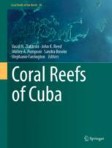Search
Search Results
-
Synthesising 35 years of invasive non-native species research
The growing focus on the threat of invasive non-native species (INNS) in international biodiversity targets highlights a need for targeted research...

-
Safe and genotyped. A non-invasive method for extraction of amphibian DNA from water baths and its application on Northern spectacled salamanders, Salamandrina perspicillata (Savi 1821)
The global decline of amphibian populations, with 40.7% of species classified as threatened, calls for innovative and ethical approaches in...

-
Targeted genome-wide SNP genoty** in feral horses using non-invasive fecal swabs
The development of high-throughput sequencing has prompted a transition in wildlife genetics from using microsatellites toward sets of single...

-
Understanding genetic variability: exploring large-scale copy number variants through non-invasive prenatal testing in European populations
Large-scale copy number variants (CNVs) are structural alterations in the genome that involve the duplication or deletion of DNA segments,...

-
Non-invasive monitoring of the European wildcat in a recently colonized area in the Northern Apennines (Italy)
Acquiring up-to-date information on the distribution of a species is an issue of paramount importance to set up proper conservation strategies and to...

-
Managing non-target wildlife mortality whilst using rodenticides to eradicate invasive rodents on islands
Invasive rodents are one of the greatest threats to island biodiversity. Eradicating these species from islands has become increasingly practicable...

-
Landscape Genetics in the Neotropics
Landscape genetics is an interdisciplinary field that aims at assessing the influence of environmental and landscape factors on microevolutionary...
-
Akaluc/AkaLumine bioluminescence system enables highly sensitive, non-invasive and temporal monitoring of gene expression in Drosophila
Bioluminescence generated by luciferase and luciferin has been extensively used in biological research. However, detecting signals from deep tissues...

-
Species identification method by a new non-invasive technique in Korean endangered terrestrial snail, Koreanohadra Koreana (Gastropoda: Mollusca)
Koreanohadra koreana ( K. koreana ) is an endemic species in South Korea that is listed as endangered. While the ecology and phylogenetics of K. koreana ...

-
Population Genetics of Cuba’s Scleractinian Corals
Cuba’s coasts support a large area of diverse and relatively healthy coral communities that are centrally located at the interface of the northern...
-
Non-invasive Sampling Techniques Applied to Conservation Genetic Studies in Mammals
Non-invasive samples have been used in Conservation Genetics and Molecular Ecology studies since the 1990s. The continuous advances in DNA...
-
Genetic deconvolution of fetal and maternal cell-free DNA in maternal plasma enables next-generation non-invasive prenatal screening
Current non-invasive prenatal screening (NIPS) analyzes circulating fetal cell-free DNA (cfDNA) in maternal peripheral blood for selected...

-
A Fresh Look at Conservation Genetics in the Neotropics
This chapter introduces a new perspective to the field of conservation genetics, driven by recent advancements in genomic technologies. It begins...
-
Estimation of the census (Nc) and effective (Ne) population size of a wild mandrill (Mandrillus sphinx) horde in the Lopé National Park, Gabon using a non-invasive genetic approach
Mandrills ( Mandrillus sphinx ) are enigmatic primates endemic to central Africa and are threatened by habitat loss and hunting. However, effective...

-
Restoration Genetics – A Consideration of Lessons and Opportunities
Genetics has provided key insights for improving ecological restoration outcomes over several decades. It is now well established that low genetic...
-
Wildlife Forensic Genetics: A Tool for Resolving Wildlife Crimes and Support Species Conservation
Despite the intense efforts to protect biodiversity through international treaties, laws, and organizations, wildlife crimes are increasing...
-
Improved amplification of fecal DNA supports non-invasive microsatellite genoty** of lesser long-nosed bats (Leptonycteris yerbabuenae)
Feces of animals that forage on nectar and fruit, including many species of bats, often contain DNA that is low in quality and quantity. We developed...

-
Conservation genetics of the steno-endemic Chorthippus lacustris (Orthoptera: Acrididae)
Invertebrate populations are amongst the most widespread species, inhabiting a variety of habitats, however there is limited conservation effort due...

-
Towards a standardised set of data analyses for long-term genetic monitoring of grouse using non-invasive sampling: a case study on western capercaillie
Genetic monitoring has become a popular instrument in the conservation of endangered species, allowing to estimate size and genetic structure of wild...

-
Vulnerability of non-native invasive plants to novel pathogen attack: do plant traits matter?
Exotic invasive plants are considered major threats to biodiversity globally; however, our understanding of the long-term dynamics of invasion...

